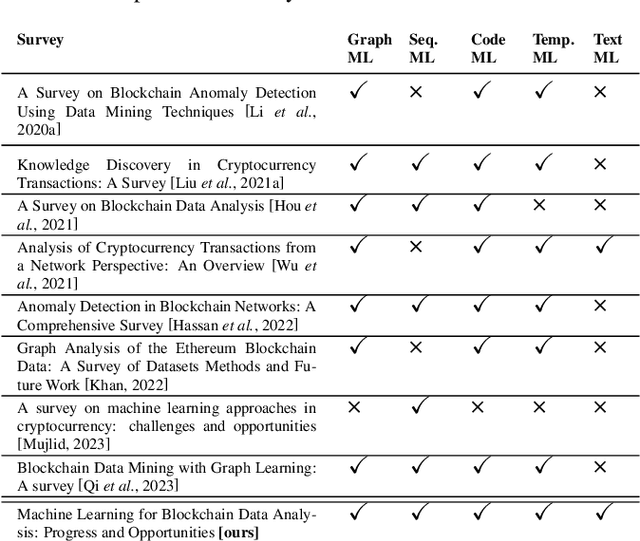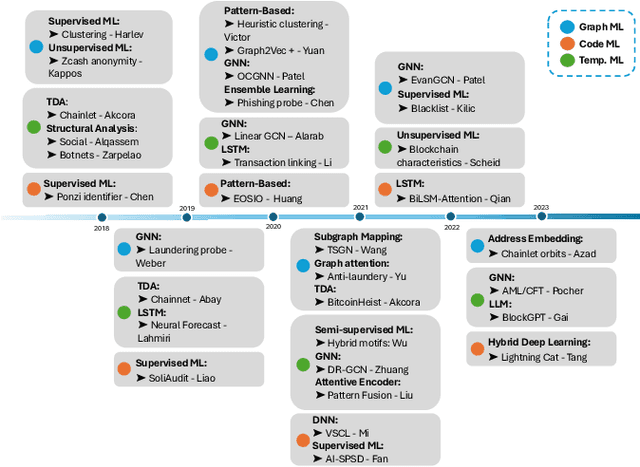Poupak Azad
Towards Neural Scaling Laws for Foundation Models on Temporal Graphs
Jun 14, 2024



Abstract:The field of temporal graph learning aims to learn from evolving network data to forecast future interactions. Given a collection of observed temporal graphs, is it possible to predict the evolution of an unseen network from the same domain? To answer this question, we first present the Temporal Graph Scaling (TGS) dataset, a large collection of temporal graphs consisting of eighty-four ERC20 token transaction networks collected from 2017 to 2023. Next, we evaluate the transferability of Temporal Graph Neural Networks (TGNNs) for the temporal graph property prediction task by pre-training on a collection of up to sixty-four token transaction networks and then evaluating the downstream performance on twenty unseen token networks. We find that the neural scaling law observed in NLP and Computer Vision also applies in temporal graph learning, where pre-training on greater number of networks leads to improved downstream performance. To the best of our knowledge, this is the first empirical demonstration of the transferability of temporal graphs learning. On downstream token networks, the largest pre-trained model outperforms single model TGNNs on thirteen unseen test networks. Therefore, we believe that this is a promising first step towards building foundation models for temporal graphs.
Machine Learning for Blockchain Data Analysis: Progress and Opportunities
Apr 28, 2024

Abstract:Blockchain technology has rapidly emerged to mainstream attention, while its publicly accessible, heterogeneous, massive-volume, and temporal data are reminiscent of the complex dynamics encountered during the last decade of big data. Unlike any prior data source, blockchain datasets encompass multiple layers of interactions across real-world entities, e.g., human users, autonomous programs, and smart contracts. Furthermore, blockchain's integration with cryptocurrencies has introduced financial aspects of unprecedented scale and complexity such as decentralized finance, stablecoins, non-fungible tokens, and central bank digital currencies. These unique characteristics present both opportunities and challenges for machine learning on blockchain data. On one hand, we examine the state-of-the-art solutions, applications, and future directions associated with leveraging machine learning for blockchain data analysis critical for the improvement of blockchain technology such as e-crime detection and trends prediction. On the other hand, we shed light on the pivotal role of blockchain by providing vast datasets and tools that can catalyze the growth of the evolving machine learning ecosystem. This paper serves as a comprehensive resource for researchers, practitioners, and policymakers, offering a roadmap for navigating this dynamic and transformative field.
 Add to Chrome
Add to Chrome Add to Firefox
Add to Firefox Add to Edge
Add to Edge